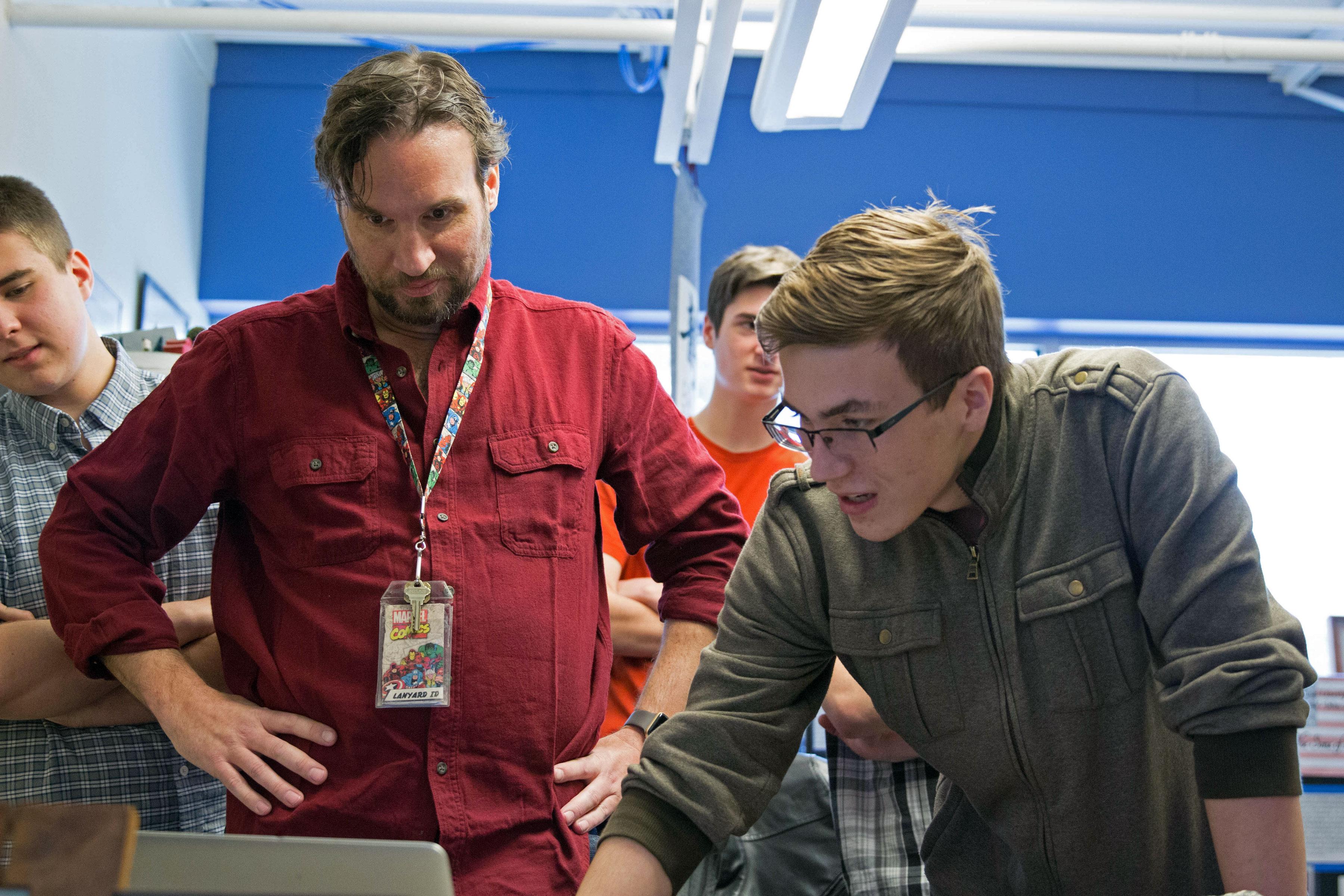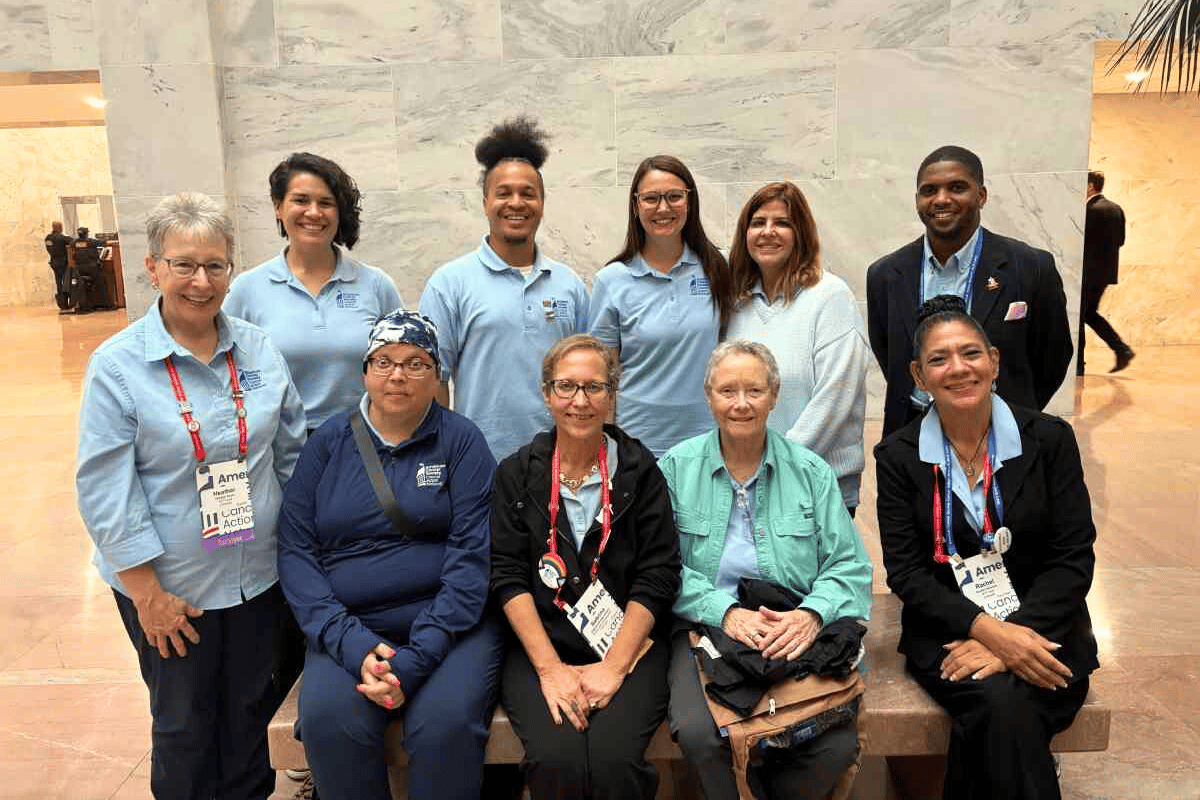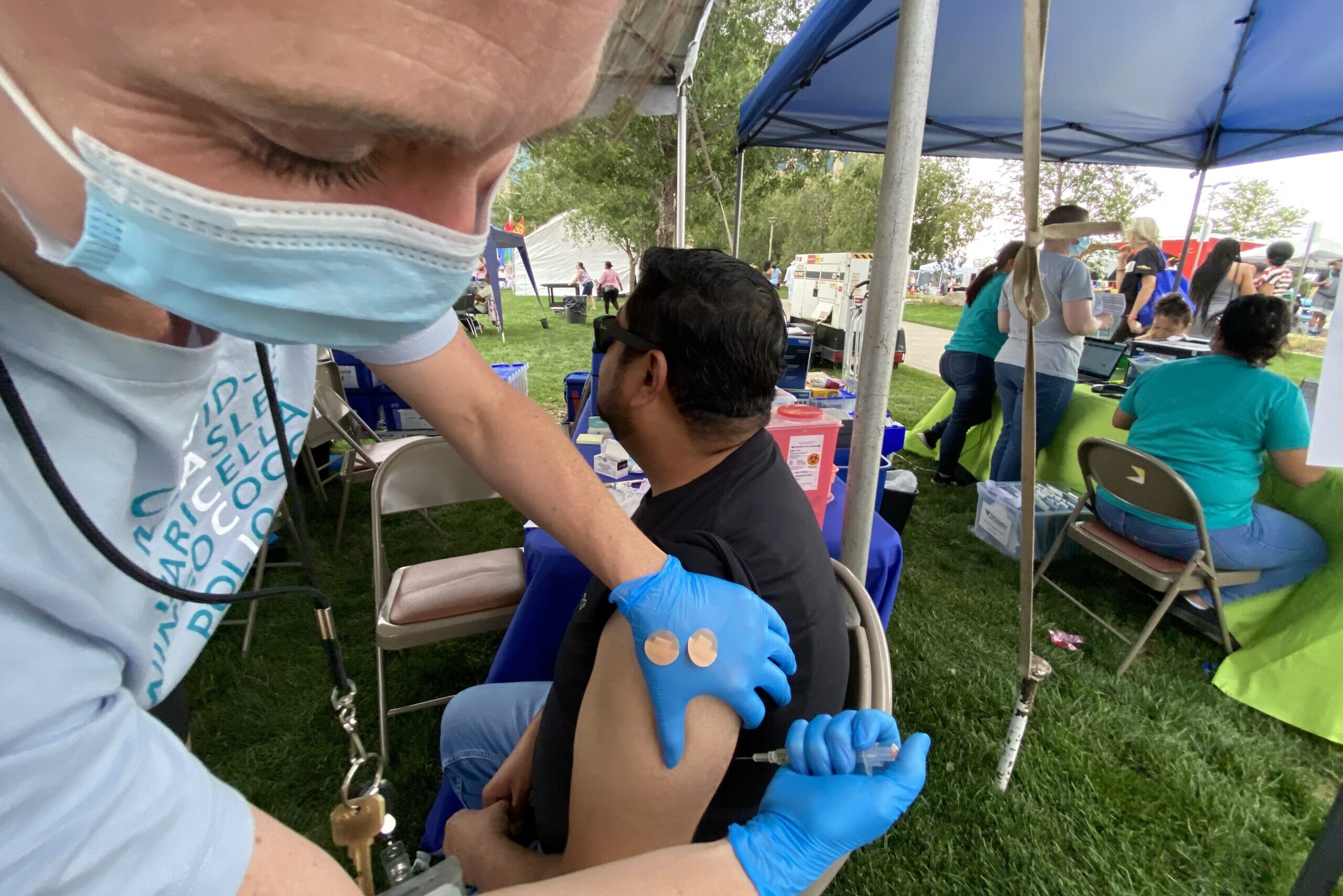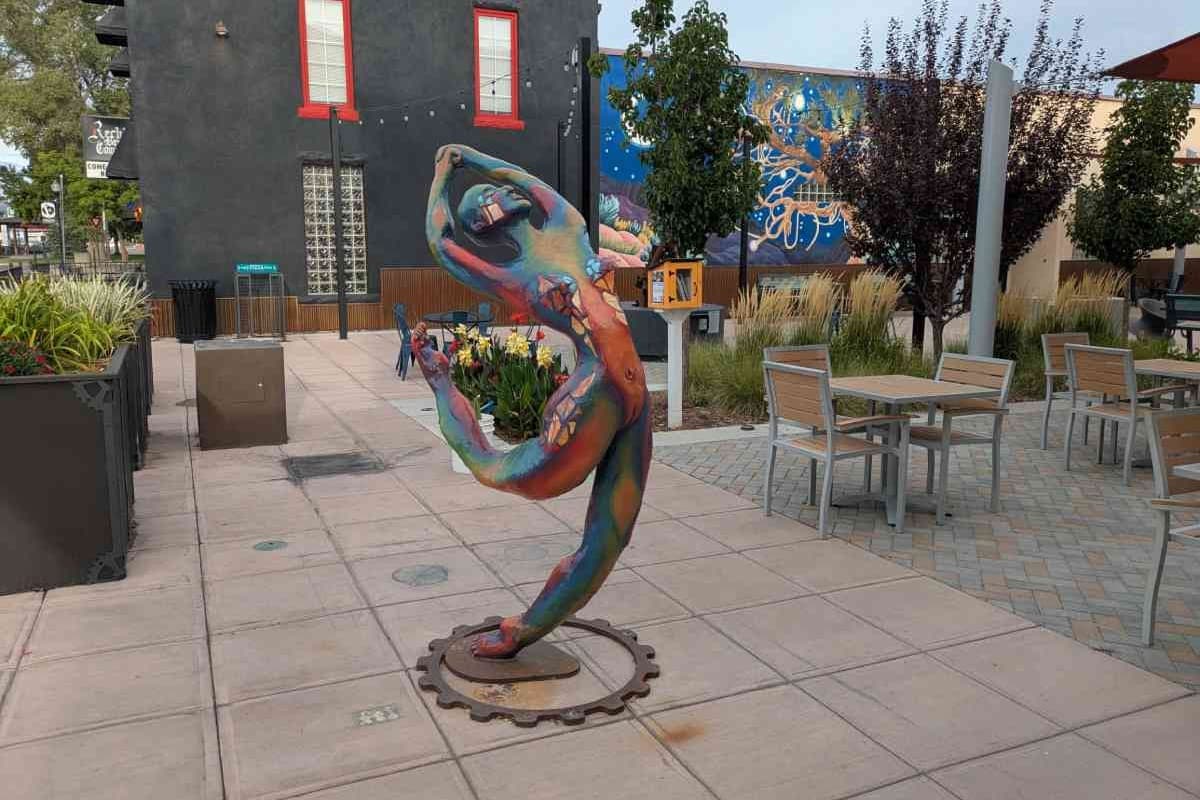
Owen Cegielski remembers how history was taught more than 25 years ago when he was in high school.
“I was accustomed to just memorizing facts and dates and events and just reading out of textbooks and working on worksheets and filling out multiple choice tests that did not provide me with any passion for the subject I was learning,” he says.
Even back then, Cegielski thought, there had to be a better way. Fast forward 25 years and the Douglas County history teacher is doing just that.
It all starts with the talking disembodied head of Kaiser Wilhelm II of Germany.
The historical what-if question Cegielski threw at his students was ‘can you prevent World War I using artificial intelligence?’ The Kaiser was one of the major players in the First World War, his actions following the assassination of Austria’s Archduke Franz Ferdinand led to the conflict. Cegielski’s experimental challenge for his students was to use artificial intelligence and robotics “to recreate historical characters from the past, and to develop a sense of empathy with those characters.” He wanted to be able to interact with them as if they were alive today.
- Related: Denver South HS Students Hear Something Increasingly Rare: First Hand Stories From WWII Vets
Students designed and programmed the artificial intelligence of the Kaiser using bot software from api.ai. He was designed to react to questions with different levels of emotion and temperament. You “either get closer to declaring war if you anger him, or getting closer to declaring peace if you try to pacify him,” says sophomore Michal Bodzianowski, who led the design team.
When the students speak to him, the Kaiser’s eyes flash wildly, his jaw flaps as he responds.
The STEM School and Academy is a technology-focused charter school where there’s a lot of freedom to think way outside the box. Teacher Owen Cegielski is very upfront with his class when he plans to experiment with a new lesson or design idea.
“I look at history like a science experiment,” Cegielski says. “And I will tell the class, ‘We’ve never used this software before, we’ve never used this technology before. I don’t think it’s been done anywhere, and will you please basically try and jump off the cliff with me for a little while and see if we can make this work?”

He’s trying to prepare students for the 21st century by teaching history and bringing it to life with “critical thinking, collaboration, problem-solving, use of artificial intelligence and robotics,” he says.
The students still had to learn World War I history in the old school way, with books, historical websites and the College Board’s AP World History curriculum.
Then a student prototype team got to work coding the questions. Students initially intended a only computer character, but one day, student Benjamin Krawciw was joking with Cegielski about a talking head — and ended up with the assignment.
A second student team studied anatomy and got to work with rubber-based clay, adding details like eyebrows, a moustache, teeth and a tongue. Student Grace Holland says they started with “wrinkles and crinkles in his face and then we baked it.”
The hardware team put an open-source computer known as an Arduino inside the Kaiser. The small computer connected to the artificial intelligence and allowed Kaiser Wilhelm’s robotic head to move as it answered, debated and reasoned.
“If you asked him who his mom was — he didn’t like his mom — so he would get angrier at that statement,” says student Benjamin Roueche. Robo-Wilhelm’s emotional state is important, because if you “asked enough angry questions he would declare war,” adds student Zach Swaim. Questions that keep him in a happier mood would lead toward peace.

It’s tricky to devote so much time to this kind of learning when there are still tests to take. This is still a world where these students want to score high on an AP exam. Jake Billings, one of Cegielski’s students, worries about that end of the year grade as he balances “keeping up with all of the activities, brand new stuff, innovating and doing stuff that’s never been done before.” That means a lot of the heavy studying takes place at home. But the students say Cegielski’s class is giving them an experience they won’t forget.
“History isn’t being able to memorize and label off a bunch of things that happened,” says student Keith Hedlund. “It’s being able to look at the evidence presented and then say, ‘OK this must have been the underlying cause, this must have been what we could have done to help.’”
By tapping into existing passions for electronics and programming, Cegielski grounded the idea that through failure, you learn the most. With the disembodied talking Wilhelm head, the students failed, revised, and improved using each other as mentors.
There were a lot of naysayers telling Cegielski to just “stick to the textbook,” but that didn’t sway him.
“I just became more resolved to prove that wrong and to kind of create a new field of what I call ‘STEMified’ history,” or history taught through the lens of technology and engineering.”
Eventually, other historical characters may join the classroom — Woodrow Wilson or Czar Nicholas II — each talking and debating with each other. Students will then work to convince their robot leader not to start a world war.









